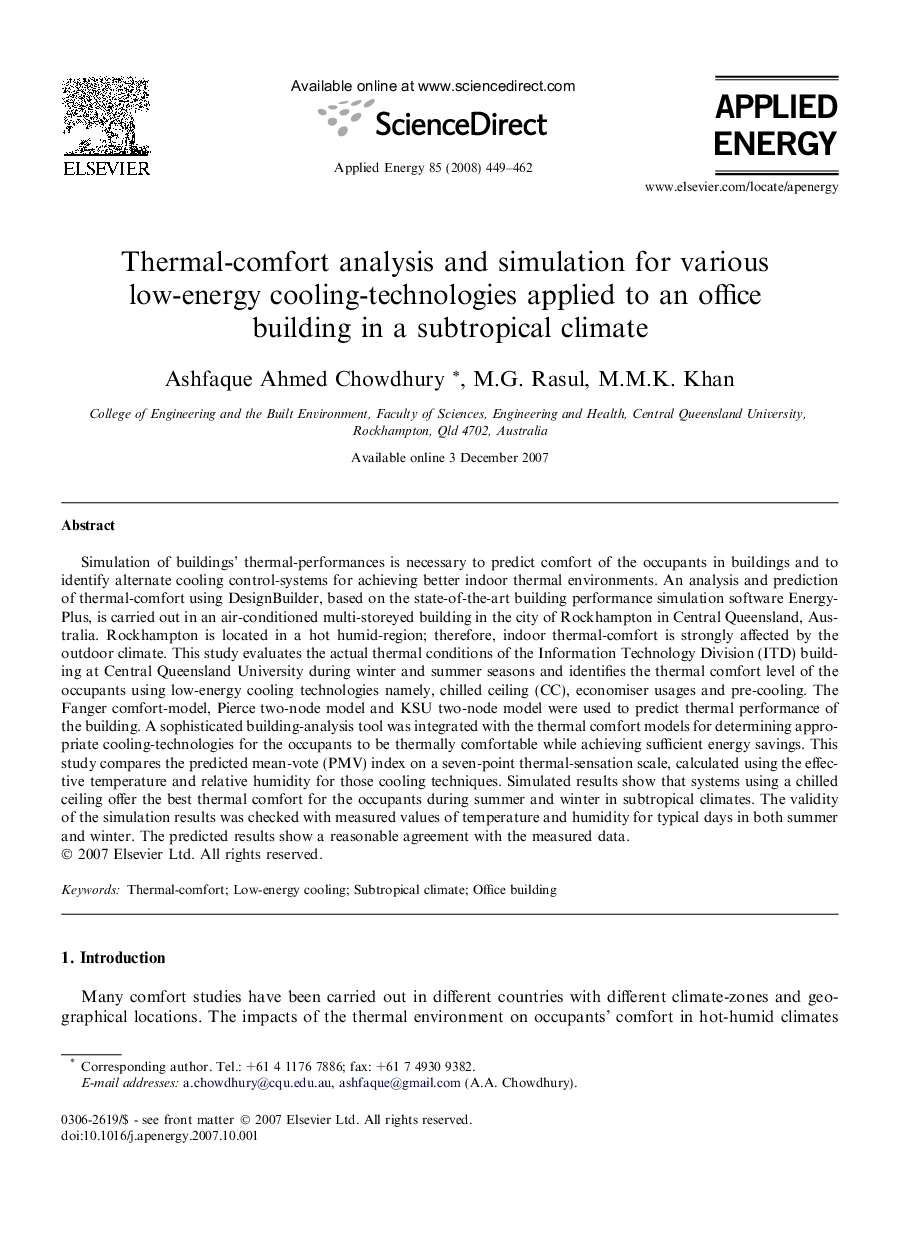| Article ID | Journal | Published Year | Pages | File Type |
|---|---|---|---|---|
| 245107 | Applied Energy | 2008 | 14 Pages |
Simulation of buildings’ thermal-performances is necessary to predict comfort of the occupants in buildings and to identify alternate cooling control-systems for achieving better indoor thermal environments. An analysis and prediction of thermal-comfort using DesignBuilder, based on the state-of-the-art building performance simulation software EnergyPlus, is carried out in an air-conditioned multi-storeyed building in the city of Rockhampton in Central Queensland, Australia. Rockhampton is located in a hot humid-region; therefore, indoor thermal-comfort is strongly affected by the outdoor climate. This study evaluates the actual thermal conditions of the Information Technology Division (ITD) building at Central Queensland University during winter and summer seasons and identifies the thermal comfort level of the occupants using low-energy cooling technologies namely, chilled ceiling (CC), economiser usages and pre-cooling. The Fanger comfort-model, Pierce two-node model and KSU two-node model were used to predict thermal performance of the building. A sophisticated building-analysis tool was integrated with the thermal comfort models for determining appropriate cooling-technologies for the occupants to be thermally comfortable while achieving sufficient energy savings. This study compares the predicted mean-vote (PMV) index on a seven-point thermal-sensation scale, calculated using the effective temperature and relative humidity for those cooling techniques. Simulated results show that systems using a chilled ceiling offer the best thermal comfort for the occupants during summer and winter in subtropical climates. The validity of the simulation results was checked with measured values of temperature and humidity for typical days in both summer and winter. The predicted results show a reasonable agreement with the measured data.
